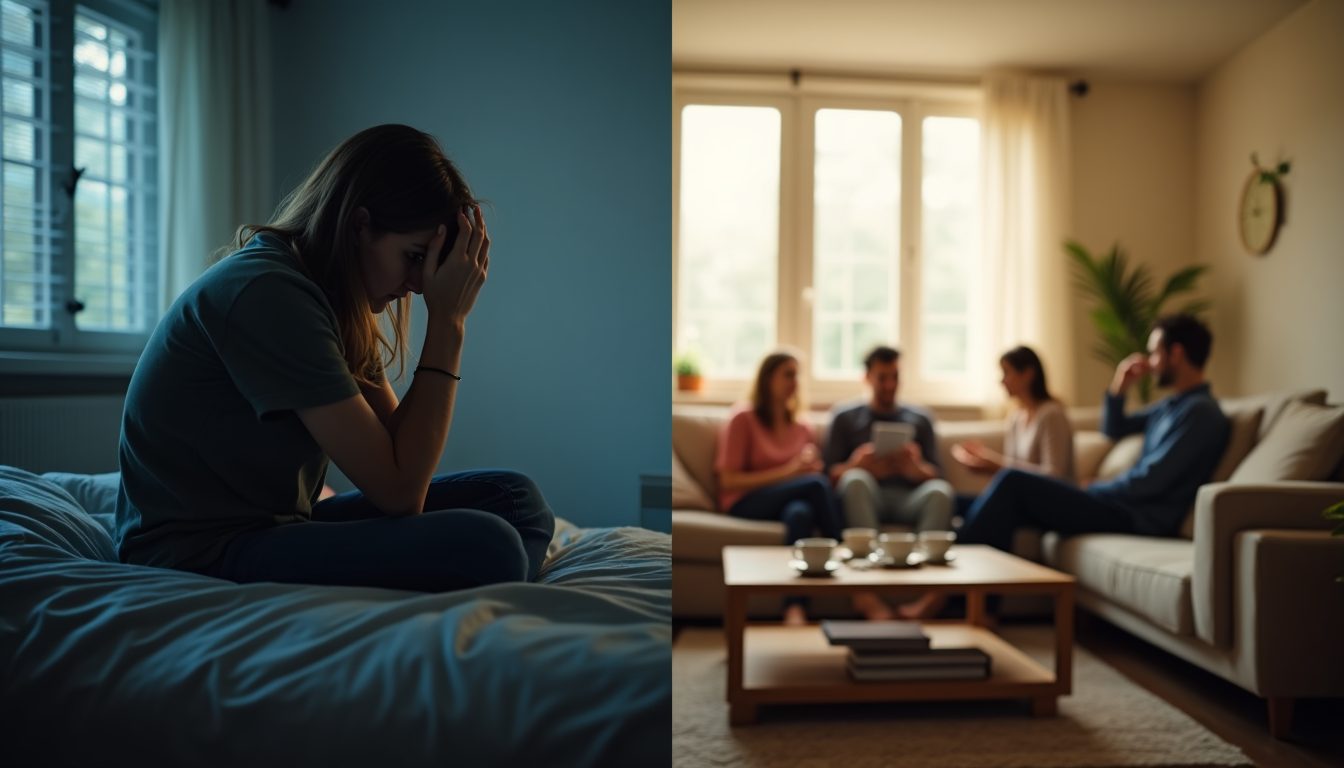Hidden Signs of Depression: A Therapist’s Guide to Early Warning Signals
Depression touches nearly three in ten adults during their lifetime. About 18% of Americans deal with depression right now. My years as a doctor have shown me how this common mental health condition creeps up slowly, which makes early warning signs hard to spot.
Many people struggle with symptoms without knowing they’re unwell. Depression’s indicators range from small changes in eating habits to major disruptions in daily life. Some red flags are easy to spot. Others lurk quietly beneath the surface and disrupt work performance, social bonds, and family life. Let me help you recognize these subtle signals that suggest someone battles depression.
Physical Changes That Signal Depression
Physical symptoms are often the first signs of depression, but people tend to miss these warning signs. Research shows that about three-quarters of patients with depression experience physical symptoms before emotional ones surface.
Changes in eating patterns
Depression can deeply affect your appetite in two different ways. About one-third of people with depression eat more and gain weight. About half of them eat less, and 30% lose a noticeable amount of weight.
These appetite changes stay consistent during depressive episodes. Brain imaging studies show that people who have depression-related appetite changes process food differently in their brains. Those who eat more show stronger responses in brain regions that control food rewards and motivation.
Unexplained aches and pains
Pain and depression share nerve pathways in the brain, which creates a complex connection between them. Studies show that patients with chronic pain are three times more likely to become depressed compared to others. The risk and length of depression increase as pain gets worse.
Common physical discomforts linked to depression include:
- Joint and muscle pain
- Chronic back pain
- Persistent headaches
- Digestive problems
- Chest discomfort
These physical symptoms become especially challenging because they create a cycle. Pain makes depression worse, and depression makes pain feel more intense.
Sleep disruptions
Sleep problems are one of depression’s most obvious physical signs. About 75% of people with depression have trouble sleeping, while 40% of young adults with depression sleep too much (hypersomnia). Sleep issues often show up before other depression symptoms become clear.
Research has found specific changes in how depressed people sleep. They usually experience:
- More time awake during the night
- Poor sleep quality
- Longer time to fall asleep
- Less total sleep time
About 83% of people with depression report at least one sleep problem, compared to 36% of those without depression. These sleep issues vary by age, affecting 77% of young adults and up to 90% of older adults.
Sleep and depression affect each other in both directions. Poor sleep can cause depression, and depression often disrupts sleep. This creates a difficult cycle where each problem can make the other worse. Sleep problems that continue after other depression symptoms improve make relapse much more likely.
Digital Behavior Warning Signs
Social media patterns often reveal hidden signs of depression before other symptoms appear. Studies show people who spend too much time on social platforms have a higher chance of developing depression. Users in the highest quarter of daily social media use are 1.66 times more likely to become depressed.
Social media usage patterns
Behavioral changes show how social media and depression are related. People who use platforms like Facebook, Snapchat, and TikTok have a 42-53% higher chance of showing depressive symptoms.
Social comparison on these platforms plays a significant role in mental health decline. Research shows that passive consumption of social media content results in:
- Weaker bonds with others
- Lower social capital
- More feelings of loneliness
Research shows exposure to idealized versions of peers makes people feel inadequate. About 90% of young adults use social media regularly. Many report that seeing others’ carefully curated lives makes them feel inferior. Of course, scrolling through seemingly perfect lives creates a distorted view of reality.
Changes in online communication
Changes in digital communication can be early warning signs of depression. Research shows people with depression often change their online behavior in specific ways. A detailed study found 48.3% of frequent social media users developed depression symptoms, and 22.6% experienced anxiety.
Online interaction patterns can signal mental health challenges. Key signs include:
- More late-night platform activity
- Quick changes in posting frequency
- Moving from active participation to passive browsing
- Different response patterns to messages

